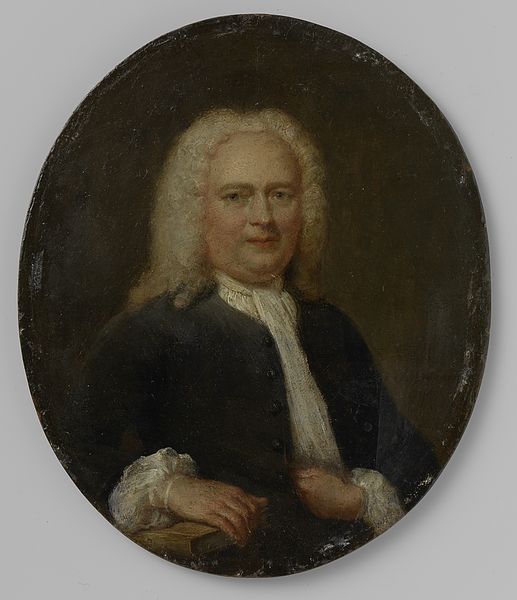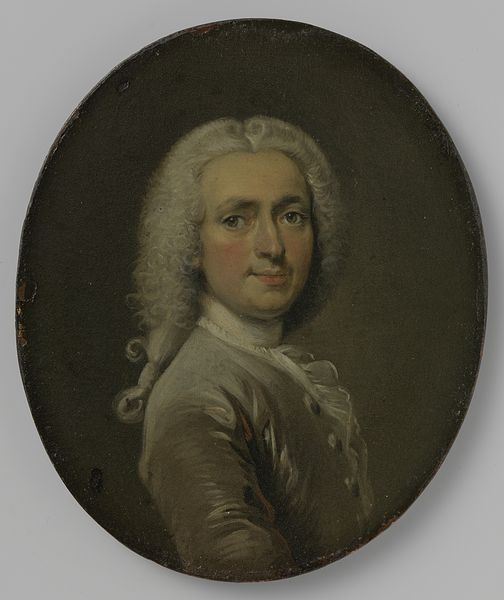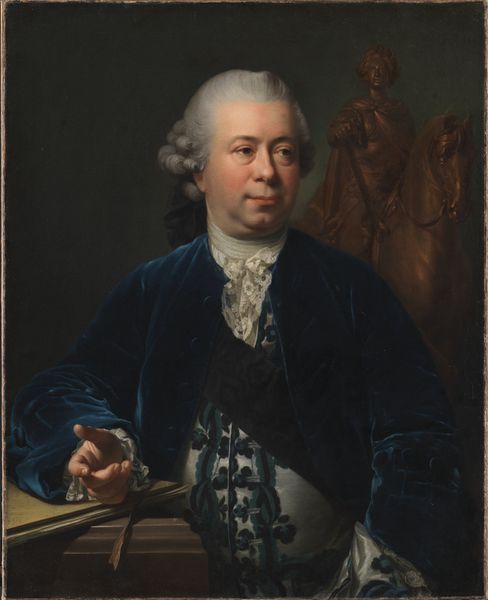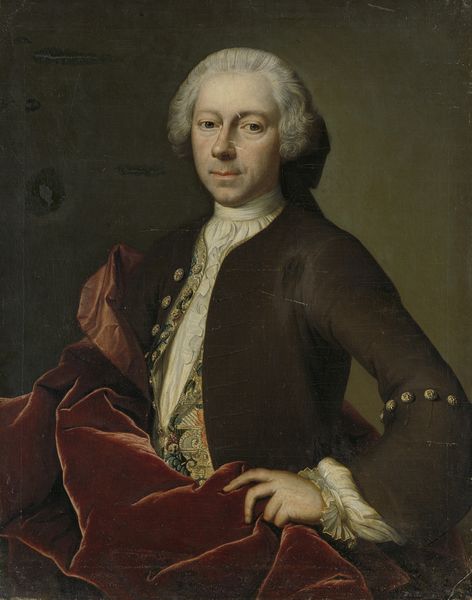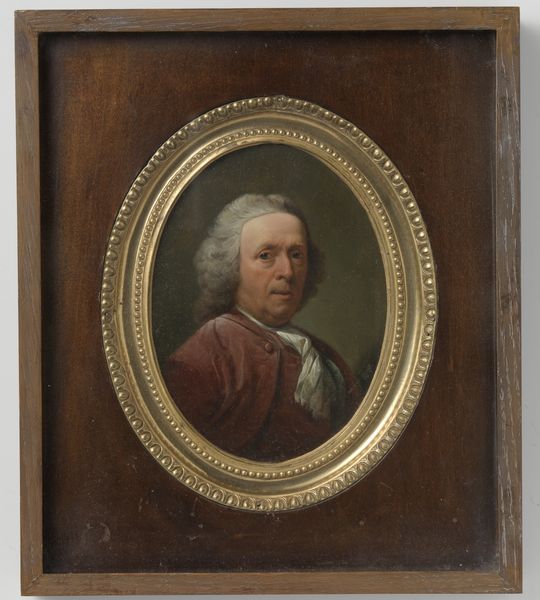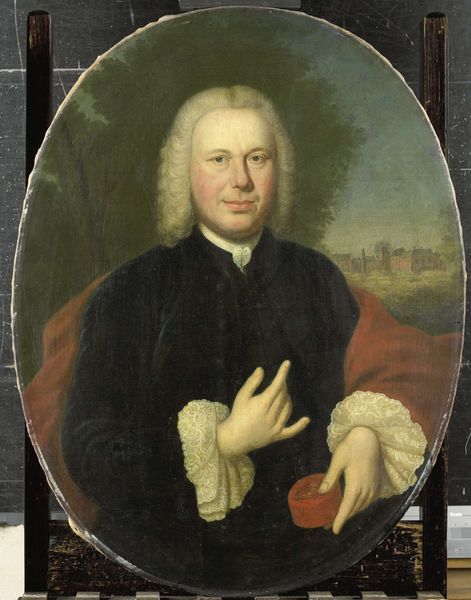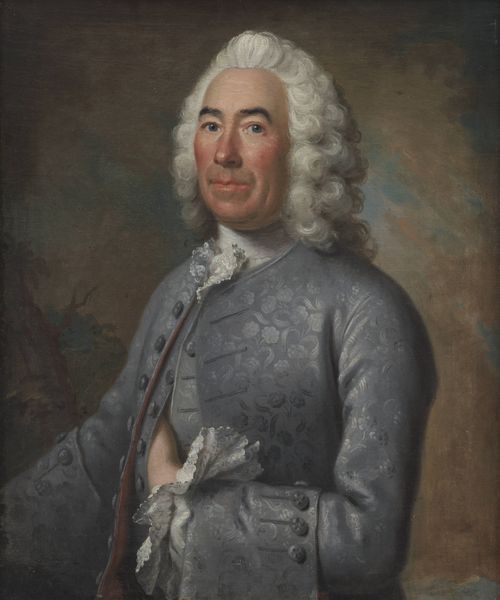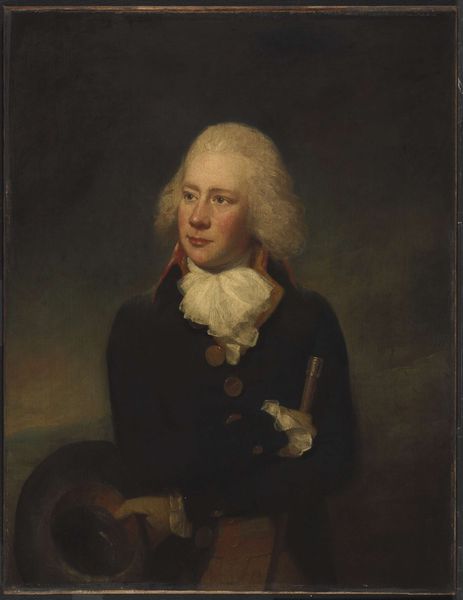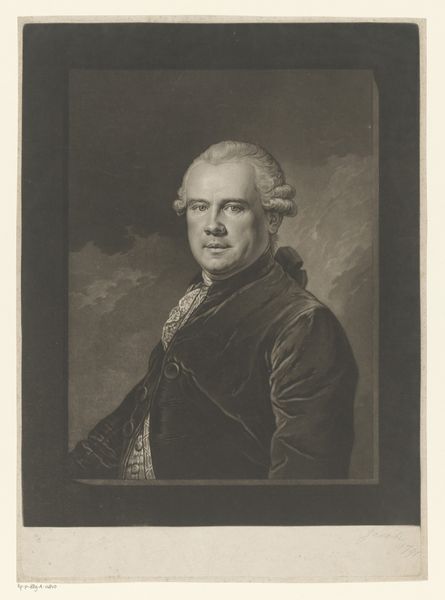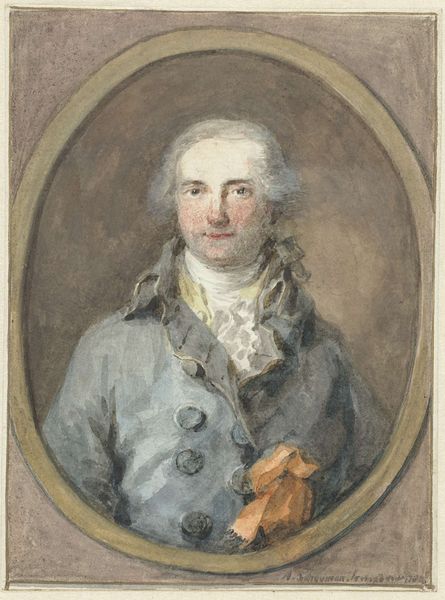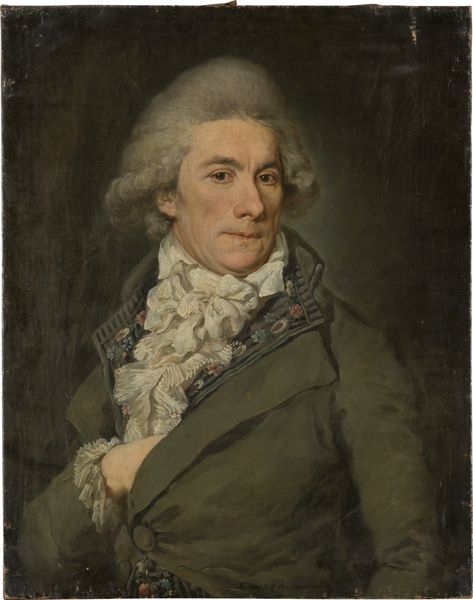
Portrait of Frederik Hansen de Liliendal, Danish Consul at Bordeaux 1767 - 1769
0:00
0:00
painting, oil-paint
#
portrait
#
painting
#
oil-paint
#
academic-art
#
rococo
Dimensions: 89 cm (height) x 70 cm (width) (Netto)
Curator: Standing before us, we have Jean-Baptiste Perronneau's "Portrait of Frederik Hansen de Liliendal, Danish Consul at Bordeaux," created between 1767 and 1769. Editor: He seems like a man comfortable in his position. Almost placid, you might say. The colors, that subdued red and grey, reinforce a feeling of calm authority. Curator: Perronneau was working in a moment rife with social changes, wouldn't you agree? We see here the display of status via this man’s official position, linking directly into networks of power and early capitalist structures of 18th-century Europe. What can this say about how identity in this moment was being actively crafted to legitimize power dynamics in shifting political spheres? Editor: Indeed. The details tell their own story, it seems, highlighting a society increasingly invested in external symbols of authority. I imagine Perronneau, positioning himself in the art world, aimed at the cultural tastes of the era to attract clientele seeking legitimization by those new systems. We can almost taste that sweet interplay between the old world and new markets in the portrait. Curator: This gets to what portraiture has long represented: it wasn't only the depiction of an individual. It's about access and power. For marginalized communities this very kind of representation has often been unavailable, but what can we gather from Liliendal's role within Danish power systems of that moment to better grasp who it empowers even still today. Editor: That’s compelling to consider. If one sees this work outside any present power dynamics and just takes its aesthetics and subject in light of 18th-century artistic ideals, then what this reveals regarding those political circumstances comes as a vital lesson to us centuries later. We can, therefore, acknowledge a dialogue, in which Frederik Liliendal’s image speaks with critical impact concerning power itself and how he has been rendered by Jean-Baptiste Perronneau. Curator: Yes, analyzing how class and economics influence even artistic style makes such an examination valuable. Understanding historical biases helps us move toward equity today. Editor: Absolutely. Every image contains coded narratives, which begs us to reconsider all representation around us in order to find something beautiful.
Comments
No comments
Be the first to comment and join the conversation on the ultimate creative platform.

